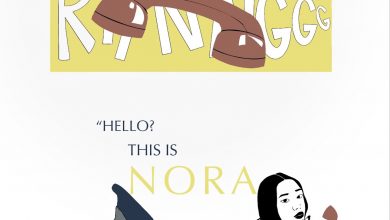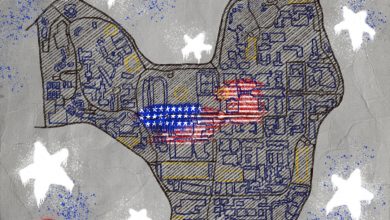La Intellectuelle: Manic Pixie Dream Girl
 La Intellectuelle is a feminist pop culture nerd looking for smart things in dumb places. Today she begins a series on archetypes with the Manic Pixie Dream Girl.
La Intellectuelle is a feminist pop culture nerd looking for smart things in dumb places. Today she begins a series on archetypes with the Manic Pixie Dream Girl.
Zooey Deschanel is a lovely lady. Her character in “Elf“ was the perfect monotone foil to Will Ferrell’s titular goofball. My brother has informed me that, due to Deschanel’s recent divorce from Death Cab for Cutie frontman Ben Gibbard, he is going to devise a plan that ends with the She & Him singer becoming my sister-in-law. And that would probably be really fun, because we could work together to make a cake that’s really cookies in the shape of a giant owl topped with glitter and sprinkles, and then sing about how quirky we are. My point is: I like ZoDesch. She’s cute. However, Zooey also only plays one character, and that one character is the essence of a cinematic archetype – the Manic Pixie Dream Girl.
The term was coined by a film critic named Nathan Rabin in response to Kristen Dunst’s character in the lackluster Cameron Crowe movie “Elizabethtown.” If you’ve never seen this movie (which is understandable, because it wasn’t very good), then think of Natalie Portman in “Garden State,” Scarlett Johansson in “Lost in Translation,” Zooey Deschanel in “(500) Days of Summer “and “New Girl,” or, if you prefer your movies to have cross-dressers and/or Mickey Rooney turning an incredibly offensive portrayal of a Chinese man, Marilyn in “Some Like it Hot” and Audrey in “Breakfast at Tiffany’s.”
The point is, this archetype has been around for a while, and it ain’t leaving. Basically, the Manic Pixie Dream Girl is cute, quirky, and a tad crazy. She likes offbeat fashion and music, and her only purpose in the story is to be a) the object of a man-boy’s undying – and completely superficial (read: knowing that a girl’s favorite band is the Smiths is not the same thing as knowing that girl) – love, and b) make that man-boy grow up and find himself in this crazy, crazy world. MPDGs do not have souls. They do not have real personalities. And this is why this particular archetype is a dangerous thing. Just because a female character is not “Hollywood sexy” – if she’s pasty and brunette instead of tan and blonde, if she collects wooden ducks instead of silicon implants, if she teaches you valuable lessons about how the world is a beautiful place by sewing smiley faces into her needlework – it does not mean that she’s intelligent. It does not mean that she is real. It does not mean that she isn’t a stereotype.
This is all the cinematic version of the Hipster Girlfriend, a variation on what Jaclyn Friedman calls the “bad-ass girlfriend,” the woman a man wants to date so he can show off to his friends how cool he is because of how cool a lady he was able to bed. It’s taking a woman who may not look like the stereotypical trophy, but making her a trophy, anyway. The Hipster Girlfriend is that girl in a cardigan who hides behind glasses and a brunette bob in the corner of a coffee shop while her boyfriend and his buddies talk about philosophy and Best Coast. The Hipster Girlfriend sits silently and giggles from time to time. The Hipster Girlfriend is not allowed to be anything more than the Hipster Girlfriend. There is no possible way that this woman does not have opinions and feelings beyond well-placed giggles and an iTunes playlist of Morissey songs. But a guy who went to see “Garden State” in 8th grade and has since devoted his life to finding an epileptic girl who will make all his troubles go away does not need her to be anything more than his IRL MPDG.
I think it’s a little comforting to know that, if I want to make it in Hollywood, I don’t need to be sexy – I just need to be adorable, and also a tiny bit crazy.
Photo credit: aresryo/Flickr





Love this blog! Hilariously spot on.
This is awesome! So fun to read and such an accurate analyis
Let’s also not forget that the Manic Pixie Dream Girl MUST be white. There is no such thing as the cute and quirky black girl or Latina.